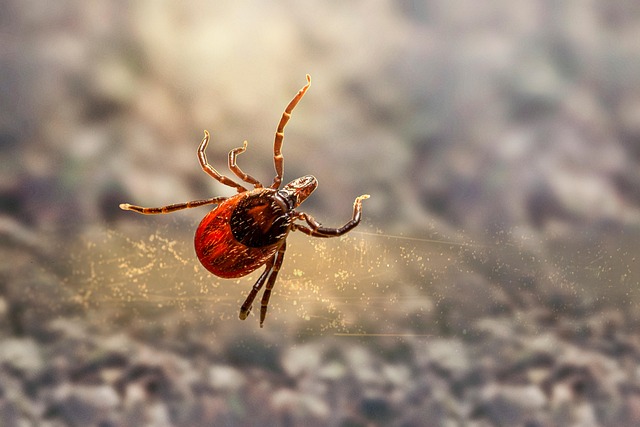Ticks thrive in lush, humid environments, proliferating in well-maintained lawns and gardens. Professional tick removal is crucial for minimizing disease risks during active seasons (spring-fall). Experts employ specialized tools, organic repellents, and perimeter defenses to disrupt tick habitats and life cycles. Regular post-treatment monitoring, indoor vacuuming, and yard maintenance enhance protection against ticks and associated diseases.
Ticks are persistent pests that can transmit serious diseases. To effectively manage them, understanding their behavior and habitat is crucial. This article explores comprehensive strategies, from professional tick removal techniques and specialized tools to perimeter treatments for prevention. Learn about post-treatment care and monitoring for long-lasting protection against these tiny vectors of illness. Discover the best practices for a tick-free environment, emphasizing the role of professional tick removal in your overall strategy.
Understanding Tick Behavior and Their Habitat
Ticks are minute parasites that thrive in lush, dense vegetation and humid environments, making them prevalent in well-maintained lawns and gardens. Understanding their behavior is crucial for effective management. These arachnid-like creatures remain dormant during dry periods, emerging when conditions are optimal, typically spring through fall. They actively seek hosts—such as humans, pets, and wildlife—to attach and feed on blood, often hiding in tall grass or under foliage.
Professional tick removal is essential for minimizing the risk of disease transmission and ensuring a safe outdoor experience. Regular lawn care practices, including mowing regularly and removing leaf debris, can deter ticks by reducing their preferred habitats. Additionally, applying permethrin-based treatments or using organic repellents recommended by professionals can significantly decrease tick populations, providing a safer environment for residents and pets to enjoy the outdoors.
Professional Tick Removal Techniques and Tools
Professional tick removal requires specialized tools and techniques to ensure safe and effective elimination. Trained professionals employ fine-tipped tweezers or special tick removal tools designed to grasp the tick close to the skin’s surface, minimizing damage to the host (the person or animal) and reducing the risk of disease transmission. These tools are often equipped with a pointed tip to locate and extract ticks accurately, preventing their heads from breaking off and remaining embedded in the skin.
Unlike DIY methods, professional tick removal services guarantee complete removal, even in hard-to-reach areas. They also offer expertise in identifying different tick species, which is crucial as some ticks carry specific diseases. Proper disposal of removed ticks and post-removal cleaning protocols are standard practices among professionals, contributing to a safer environment and reducing the risk of infection for both the host and others.
Perimeter Treatments to Prevent Tick Infestations
Establishing a robust perimeter defense is a strategic step in managing ticks and preventing infestations. Professional services often employ a combination of organic and synthetic treatments to create a protective barrier around properties, disrupting tick habitats and life cycles. These methods include applying specialized tick repellents along fences, decks, and other structural perimeters, ensuring these areas are less inviting to ticks seeking hosts.
Regular applications of these treatments can significantly reduce the risk of tick encounters, providing peace of mind for homeowners. Additionally, professionals offer expert advice on maintaining landscapes to minimize tick habitats, such as removing brushy vegetation and regularly cutting grass, which, when combined with effective perimeter treatments, becomes a comprehensive strategy for tick management and the prevention of bites, including professional tick removal.
Post-Treatment Care and Monitoring for Effective Tick Management
After treating your lawn and perimeter areas for ticks, proper post-treatment care and monitoring are essential for effective management. This includes regularly inspecting your property for any signs of tick activity, such as their presence on pets or in grass areas. Regular vacuuming of indoor spaces can help remove any stray ticks that may have made their way inside during the treatment process.
Additionally, maintaining a clean lawn and yard is crucial. Removing leaf debris, cutting grass regularly, and trimming shrubbery can limit tick habitats and reduce their population over time. Remember, professional tick removal services are also available to ensure thorough and safe handling of any ticks encountered, providing an extra layer of protection for your family and pets.
In light of the above, it’s clear that a multi-faceted approach combining understanding tick behavior, employing professional tick removal techniques, implementing perimeter treatments, and post-treatment monitoring is key to effective tick management. By taking these comprehensive steps, folks can not only remove existing ticks but also prevent future infestations, fostering a safer and healthier environment. Remember that when it comes to tick control, knowledge is power, and proactive measures are crucial for navigating this challenging landscape.
